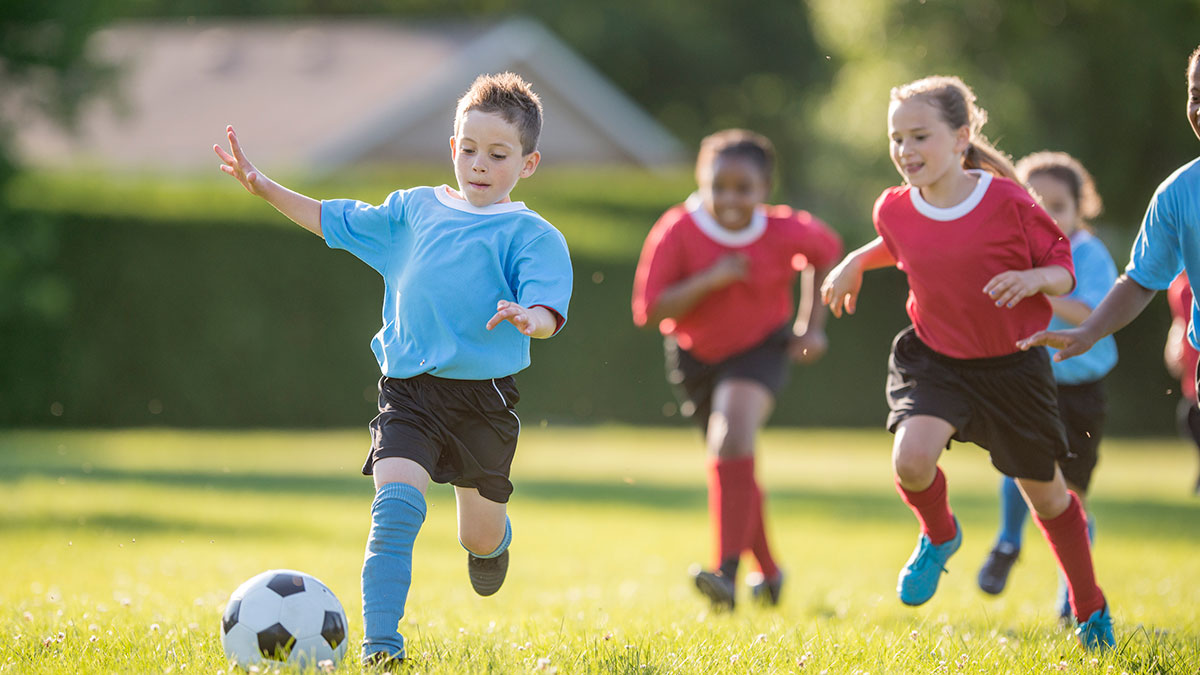“How common are fractures in children and adolescents?” is a question we receive often from worried parents. While no parent wants to see their child injured, the specialists at Charlottesville Orthopaedic Center can assure you that fractures in children and young adults are very common—especially in physically active kids.
If your child has experienced a fracture, here’s what you need to know.
Causes of Fractures in Children and Adolescents
For most children and teens, fractures happen during mild to moderate play or sports activities. In younger kids, falls are a frequent cause—often when they reach out to catch themselves, leading to an arm fracture.
Fractures also tend to peak in early adolescence during growth spurts, when bones are temporarily more vulnerable. Sports with higher fracture risk include track, cross-country, baseball, soccer, and football.
Prevention tips:
-
Encourage variety in sports and training to balance high- and low-impact activities.
-
Support bone health with a calcium- and vitamin D-rich diet.
-
Strengthen muscles through regular physical activity to protect bones.
Common Types of Fractures in Children
Buckle Fracture (Torus Fracture) – Caused by compression of a softer, more pliable bone, common in younger children.
Greenstick Fracture – Caused by tension, where one side of the bone cracks while the other remains intact.
Stress Fracture – Tiny cracks from repetitive force, often in young runners or jumpers. Symptoms include swelling and gradually worsening pain.
Complete vs. Incomplete Fracture – Complete fractures break the bone entirely; incomplete fractures involve a crack without a full break.
Open Fracture – A break where bone pierces the skin, increasing infection risk.
Growth Plate Fracture – Injures the cartilage near the ends of bones, often in the legs, and requires immediate attention to prevent uneven healing.
First Aid for Pediatric Fractures
Fractures can be painful and alarming. The first step is to reassure the child. Most pediatric fractures do not require surgery, but proper first aid is important.
Steps to follow:
-
Ask the child what happened and if they heard a snap or grind.
-
Look for swelling, redness, deformity, or exposed bone.
-
Remove clothing around the injury.
-
Immobilize with a splint (cardboard or rolled newspaper) if possible.
-
Do not attempt to realign the bone.
When to seek care:
-
Closed fractures can often be treated in-office—call us at (434) 244-8412 for a prompt appointment.
-
Open fractures require immediate ER treatment.
Pediatric Fracture Treatment and Healing
Children’s bones are still growing, which often allows faster healing than in adults. After diagnosis through imaging, we typically use thermoforming bracing to stabilize the injury. This modern alternative to plaster casts is more comfortable and molds to the child’s body.
Healing time depends on:
-
Age of the child
-
Type of fracture
-
Severity of injury
Your doctor will review expected recovery time and follow-up care during your visit.
Worried about a fracture? Contact Charlottesville Orthopaedic Center today to schedule an evaluation and get your child on the road to recovery.
Sources Cited:
https://orthoinfo.aaos.org/en/diseases–conditions/fractures-in-children
https://www.mayoclinic.org/diseases-conditions/broken-bone-in-children/symptoms-causes/syc-20479778
https://www.stanfordchildrens.org/en/topic/default?id=fractures-broken-bones-in-children-90-P02754
Dr. David Nielsen, D.O. is a board-certified orthopedic surgeon with over 20 years of experience in hand, upper extremity, and shoulder surgery. He trained at Kirksville College of Osteopathic Medicine and the University of South Florida. He brings over two decades of surgical experience and a deep commitment to patient-centered care as the founder of Charlottesville Orthopaedic Center.
Patient Resources
Explore our Patient Resource center for helpful information about our expert team, comprehensive services, informative blog, and how to easily connect with us.
Complimentary Movement Screening
Charlottesville Orthopaedic Center offers complimentary movement screenings to assess your movement, identify imbalances, and help prevent injuries. Whether you’re active, recovering, or want to move better, our expert phsycial therapists provide personalized recommendations for your long-term mobility and wellness.
Learn More








